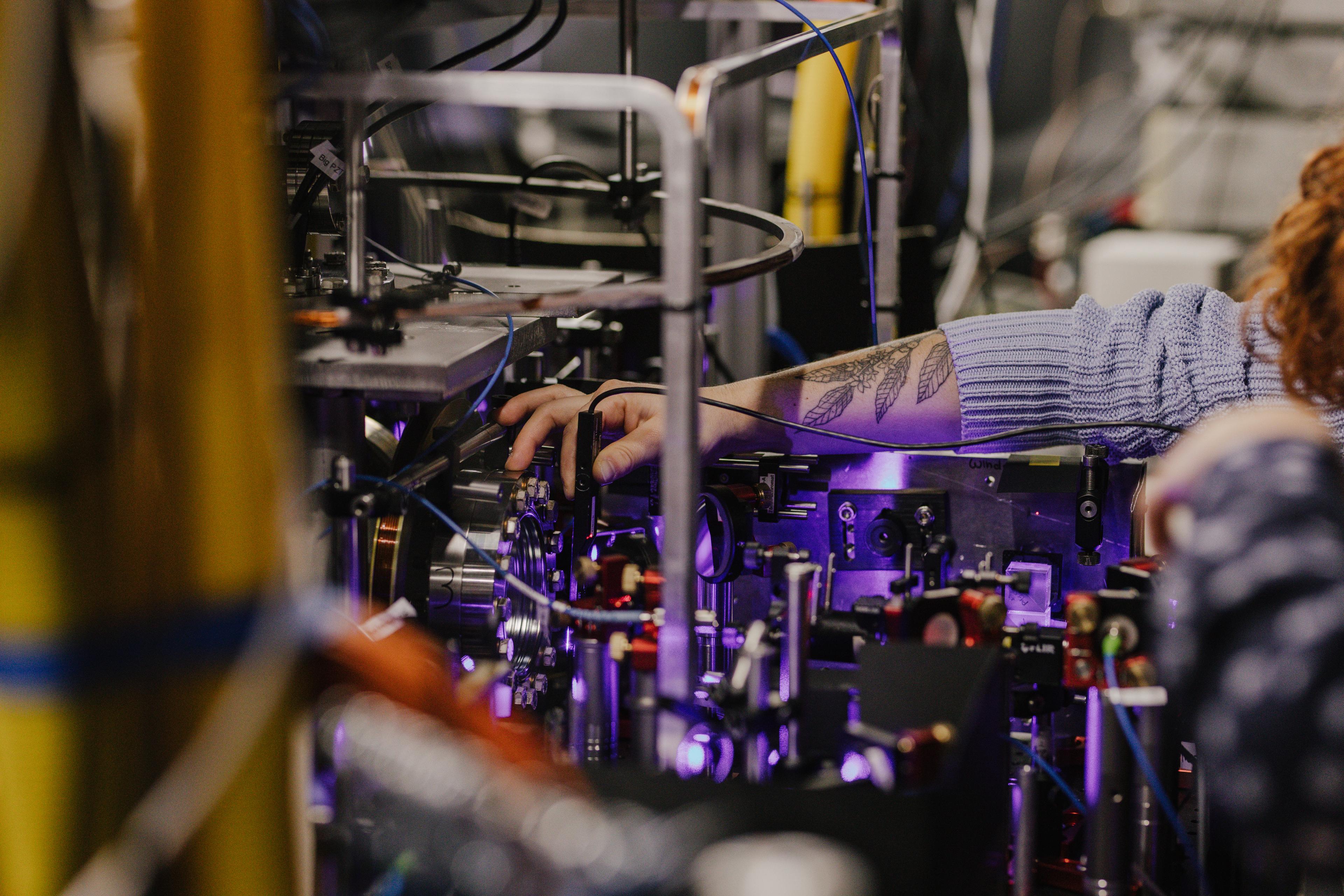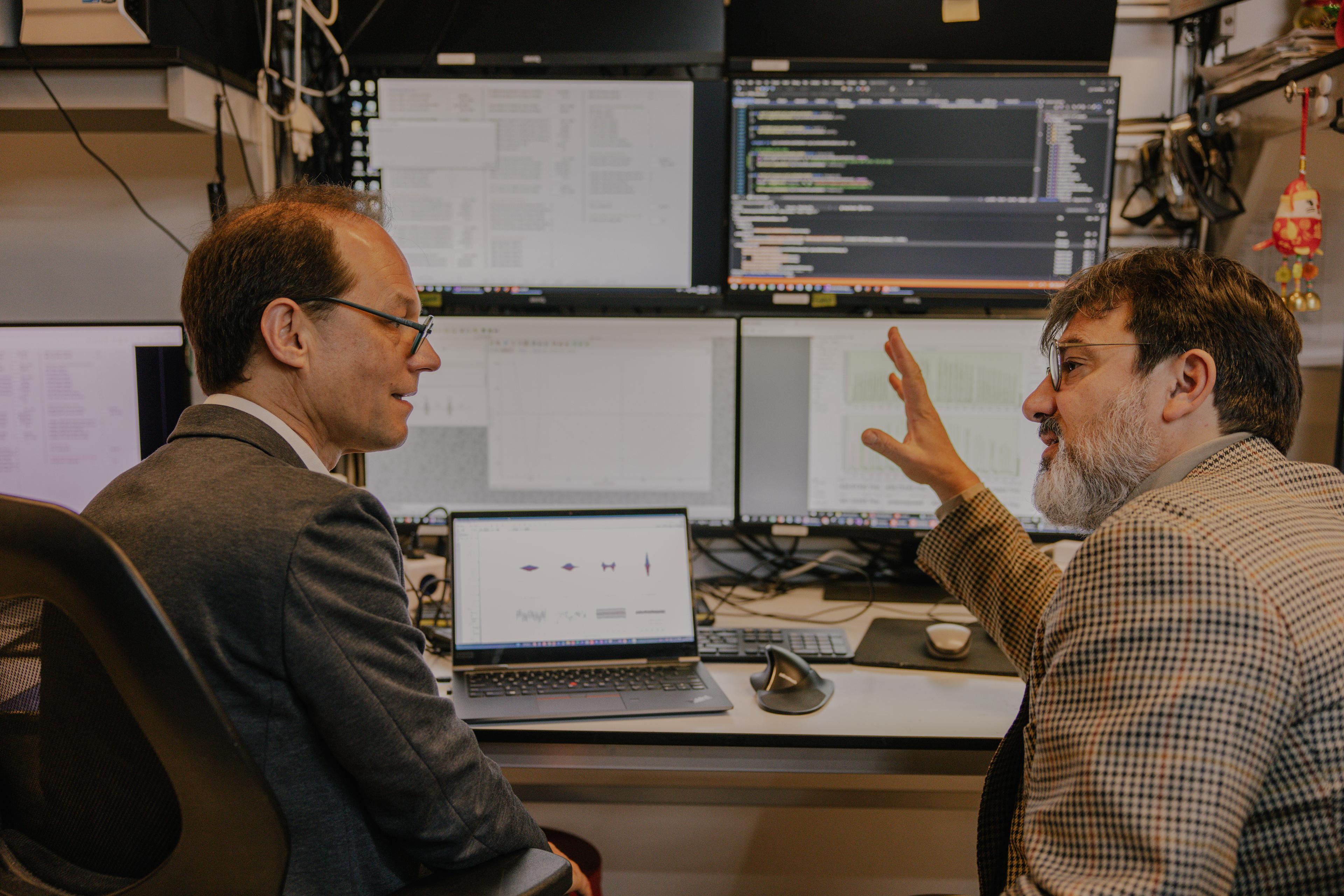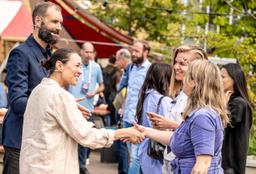Ultracold quantum sensing testbed

Quantum sensors can vastly outperform their classical counterparts. The best quantum clocks would only go wrong by one second over the age of the universe and can detect the gravitational time dilation created by just one centimeter of height difference. These clocks, and atom interferometers built using similar technology, have many applications: the exploration of the underground (from the detection of old water tubes below train tracks to the observation of magma chambers filling up), the synchronization of telecom networks (enabling terrestrial navigation at the 0.1m level or GPS outage protection), the detection of gravitational wave in the infrasound regime and much more.
In the Quantum Delta NL Ultracold Quantum Sensing Testbed at UvA and VU in Amsterdam we are working on bringing these potential societal applications into reality by advancing quantum sensors based on ultracold strontium atoms. Usually such quantum sensors fill an entire room and need several PhD students for maintenance and operation. Our ambition are transportable sensors that fit into a few m3, which will enable societal applications.
A core part of our testbed is a modular optical clock and personnel that supports industry in many ways to develop components, systems and services based on ultracold quantum sensors. For example, we work with QuiX Quantum to develop photonic chip based lasers for strontium clocks, which are crucial to render such clocks small enough for a large market or placement on satellites. We work with the European space agency ESA on compact clocks, for example on ultracold atom sources and compact vacuum chambers. We help startups to create components required for compact clocks, such as highly reliable optical circuits. We coordinate the European Quantum Flagship project AQuRA, in which ten partners from industry and academia build the product prototype of an optical clock.
The modular optical clock built at UvA will make use of our continuous ultracold strontium source technology to enable much faster averaging times (zero-deadtime clock operation) or better short-term stability (using a new operation principle, superradiance) than traditional optical clocks. At VU we are developing advanced time and frequency distribution solutions, which we will use to distribute the frequency reference provided by UvA’s clock to VU, the Dutch metrology institute VSL, and TU/e. Our ambition is to establish high-precision time and frequency distribution as a commercial service and to help users develop applications of this service, such as terrestrial navigation, synchronization of radio telescopes or telecom networks, or GPS outage proofing of applications that currently rely on GPS for synchronization.
Beyond clocks, we are developing advanced atom interferometers, which can be used for underground exploration or inertial navigation. In particular, we are exploring continuously operating atom interferometers and atom interferometers based on a continuous atom laser.
All the advances we will achieve over the first four years of the QDNL will be used towards the end of QDNL to build the Dutch Quantum Clock, a highly reliable optical clock that will serve as an ultraprecise time and frequency reference for the Dutch time and frequency distribution network.
The QDNL Ultracold Quantum Sensing Testbed will be crucial to exploit the immense know-how of Dutch researchers and technological prowess of Dutch and European companies for the creation of commercial ultracold quantum sensing solutions.
If you are interested in discussing or collaborating with us, please contact Florian Schreck (schreck@uva.nl) and Philippe Bouyer (p.bouyer@uva.nl).

